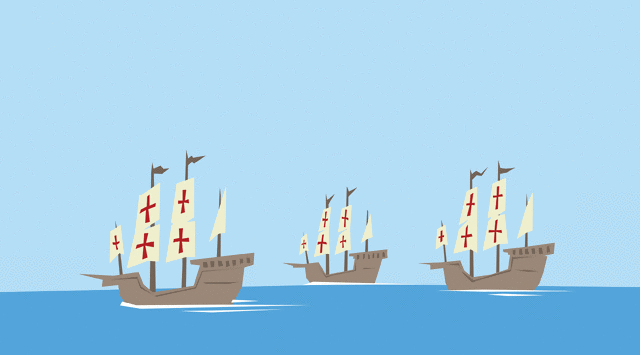

In fact, every theory requires that the Diario contain one or more specific errors.

All are among or near today's Bahama islands, but they are scattered over a range of 450 miles.Īs each of the theorists has pointed out, errors could have crept into the copying process at each stage. This copy, which survives today, is known as the Diario and its vagueness - presumably reflecting Columbus's vagueness - has allowed at least nine islands to be advanced, usually with more fervor than evidence, over the last few centuries as the true Guanahani. Before Luis inherited the Barcelona copy, a Dominican friar named Bartolome de Las Casas hand-copied the part that dealt with the landfall and the travels among the islands, apparently for use in writing his "History of the Indies." The only known clues to where Columbus first landed come from a thirdhand version of the log. He probably sold it, as he did most of the family's possessions, to finance his extravagant lifestyle, which eventually landed him in prison for having three wives simultaneously. It is thought to have remained in the Columbus family until the explorer's ne'er-do-well grandson Luis inherited it. Unfortunately, the Barcelona copy is also missing. She had a scribe in Barcelona make a copy for Columbus and nobody knows what happened to the original.

Columbus presented it to Isabela on his return. The loss of the original log is a major historical disappointment. It is one of the few unmistakable points of contact between the real world and the abstract of the log.Īnd it is from this part of Columbus's voyage, experts agree, that historians must reckon backwards to find Guanahani, site of the historic first step into the New World. His descriptions make it clear this is the Cuba of today. Island five he named for Prince Juan, but in the log Columbus often called it by its Indian name - Cuba. Working his way down a hierarchy of names, Columbus dubbed the third island for King Ferdinand of Spain and the fourth for Queen Isabela. And again he wrote only sketchy descriptions of the island and the path he sailed. He called that one Santa Maria, but it too, like all the others he would visit, was goldless. And, although he gave it Spanish Christendom's most sacred name - San Salvador - he stayed there just three days and never returned.Ĭolumbus's mission was, of course, to find gold and once he satisfied himself that there was none on Guanahani, the abstract says he sailed to another island that the "Indians," as he called them, assured him had gold. Unfortunately, Columbus never bothered to say exactly where the island was or to describe it in detail.

An "abstract" made by a 16th-century Spanish friar is thought to be a fairly accurate copy of the key parts, and it says the explorer's first landfall was a small island that the inhabitants called Guanahani. Nobody, however, knows for sure exactly where he found it.Ĭolumbus's log, which might be expected to answer the question, has been lost for centuries. Everybody knows that Christopher Columbus "discovered" America on this day exactly 500 years ago.


 0 kommentar(er)
0 kommentar(er)
